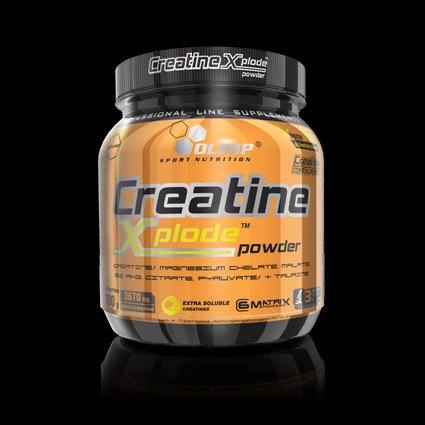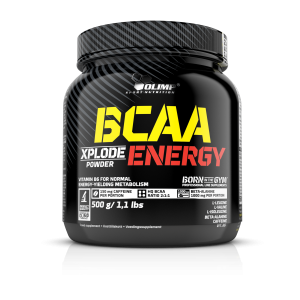Multifunctionality of creatine esters and protection of the ester groups

Esters are compounds resulting from a joining of acid and alcohol, i.e. from the linking of a carboxyl (acid) group of one of them, with the hydroxyl (alcohol) group of the second one, which is called an ester bond. The ester bond protects the carboxyl group of creatine against the reaction with its own amino group, i.e. against the conversion into creatinine.
Esterification of active substances is an old trick, well known in pharmacology. For decades, esterification was applied to substances that are rapidly metabolised or poorly absorbed from the gastrointestinal tract.
Generally, esters are very resistant to digestion, with the exception of glycerol and cholesterol, that is compounds belonging to dietary fats.
Other esters, such as ethyl ones, in general are not very easily digested and are easily absorbed as whole already from the upper gastrointestinal tract. They owe this feature to the ester bond which protects the carboxyl group, as it is this group that usually hinders the penetration of substances into the body from the gastrointestinal tract. The compounds containing them, e.g. amino acids, use special transport proteins to enter the bloodstream. For this reason, esterification is an old pharmacological tool for introducing through the intestinal tract substances that are not typically easily absorbed. And how are esters affected by the acidity of the environment? ... Generally, the acidic environment is conducive to both the creation, as well as breaking the ester bonds. However, relatively high acidity at moderate temperature rather promotes the formation of more bonds. On the other hand, relatively high acidity with increasing temperature is more conducive to their breakage. In the acidic gastric juice, usually a dynamic equilibrium is established – bound esters remain in balance with their own free constituents. In such a setting, as soon as external conditions change (e.g. stomach content moves to the less acidic intestinal lumen), the free components bind together again.
Both the blood as well as other tissues contain enzymes called esterases that break the ester bond. However, the abovementioned ethyl esters are usually resistant to their action, although they yield to it – albeit very reluctantly and slowly. Given all these facts, creatine ethyl ester penetrates almost in full to the target tissues, mainly muscle, without any loss in the gastrointestinal tract, i.e. without conversion into inactive creatinine. And how does it behave inside the muscle cells? ...
Here, it is broken down by esterases, but very slowly. This slow release of creatine from the esters at rest makes the released creatine to be systematically used in muscle protein synthesis. The portion bound in esters remains insensitive to the conversion into the inactive lactam – creatinine. Monohydrate does not possess such protection (actually it does – but a very weak one, as it is formed by hydrogen atoms), and thus it is much easier converted into creatinine.
During exercise, both the acidity and the temperature of cellular environment increase, which is a natural consequence of a rise in metabolic rate under strain. And since a simultaneous increase in acidity and temperature is conducive to breaking the ester bonds, creatine is now so easily released and transferred to tasks associated with the generation of strength stimuli. Yet, it remains in a loose link with its esterifying substance – at a dynamic balance state. Owing to this, after the cessation of exercise, when the acidity and temperature tend to the physiological optimum, creatine esters may be formed again and create a reserve pool, while the risk of conversion into creatinine is minimised. This is opposite to the situation with monohydrate which in such conditions is almost entirely converted into useless creatinine.
MALATE VERSUS ETHYL
As in the past two years there has appeared a multiplicity of creatine forms, I am often asked which one is the best – the most efficient.
The indisputable fact is that, as in the Olympic disciplines are dominated by citrate and pyruvate, in the strength sports it is malate and ethyl that receive the best opinions from athletes.
Practice has established the tactics of supplementation with them. It is based on reasoning (otherwise legitimate) that creatine supplementation should begin with simple forms of creatine, e.g. monohydrate, and only in subsequent cycles, when the body is less responsive to creatine, should involve its more advanced forms.
The creatine ethyl ester should be perceived as creatine monohydrate analogue – although one that is much better, owing to the possibility of using its lower doses and no ballast for the body in the form of unnecessary creatinine.
Thinking this way, you can begin your “adventure” with creatine immediately, starting from ethyl ester supplementation, or use it in the subsequent “treatment” if the first life cycle was conducted with creatine monohydrate. After two or three cycles with the ester, I advise you to reach for malate. After the same number of many cycles with malate, it is advisable to switch to highly advanced forms, the so-called “creatine steaks”.
This strategy of supplementation will allow you to enjoy continuous significant enhancements of form for years – and I wish you all just that!
BACK ›

